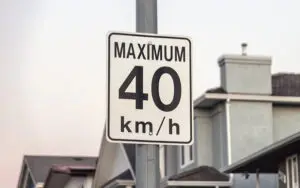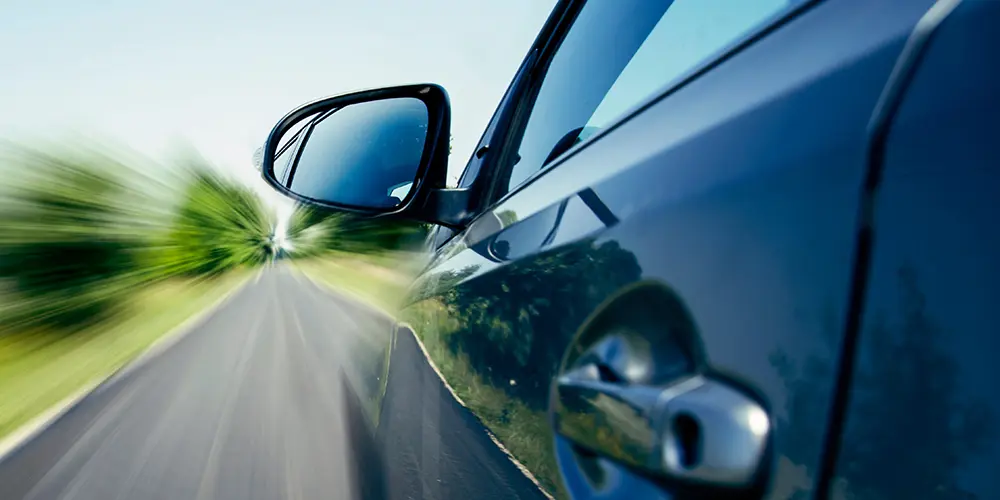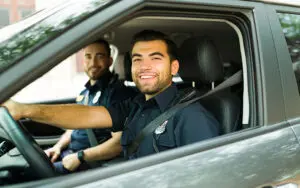Speeding in HOA communities is a bigger deal than people think. It’s not just annoying — it can be seriously dangerous. Quiet residential neighborhoods should feel safe, especially for families with kids, seniors, and pets. But when drivers ignore speed limits, that calm feeling disappears. Boards must take steps to address this growing concern.
The Problem With Speeding in HOA Communities
Speeding is more than just a nuisance for HOA neighborhoods. It can cause accidents, damage property, and put lives at risk. Children often play near the streets. Residents walk dogs, push strollers, and ride bikes. When there is a fast-moving vehicle in that setting, it can quickly become a disaster.
Drivers speeding in homeowners association areas reduce their ability to stop quickly. If a child darts into the street, speeding drivers may not have time to react. A whole multitude of problems can follow, including injuries, lawsuits, and insurance claims. Worse yet, someone could lose their life.
Besides safety concerns, speeding affects the community atmosphere. Residents can grow stressed, and trust in the board can weaken quickly. People want to feel protected in their neighborhood. If the HOA allows reckless driving, the board might start receiving countless complaints. For this reason, it’s critical to set rules and enforce them properly.
How to Stop Speeding in HOA Communities
Before taking action, HOA boards should always check their governing documents. Not every community has the same powers or responsibilities. Some rules might limit what they can do, so it’s best to be aware of those limitations first.
It can also be beneficial to hire an HOA management company. These companies know how to handle these issues and can guide boards through legal problems as well as enforcement.
That said, here are the ways to reduce speeding in HOA communities.
1. Set an HOA Speed Limit
 The first step is straightforward: set a clear and reasonable speed limit. Most communities choose something between 15 and 25 mph. This depends on the layout and the number of people using the streets. Narrow roads and curves may require lower limits.
The first step is straightforward: set a clear and reasonable speed limit. Most communities choose something between 15 and 25 mph. This depends on the layout and the number of people using the streets. Narrow roads and curves may require lower limits.
Homeowners associations should also include the rule in the community’s governing documents. If it’s not written down, it might not be enforceable. Once a limit is in place, the HOA board should educate residents. Use newsletters, emails, or meetings to spread the word.
2. Post Signs
Speed limits don’t matter if no one sees them. This is where signs come in. Boards should place signs at the entrance and throughout the neighborhood.
Additionally, it’s essential to ensure the signs are reflective and easy to read. That way, drivers can see them even at night. Use consistent designs, and place them at regular intervals. Signs act as reminders and show that the HOA takes the issue seriously.
3. Use Traffic Calming Measures
Sometimes, signs and rules aren’t enough. Drivers might ignore them or fail to see them at all. Fortunately, there are some physical solutions available to the HOA. Speed bumps, humps, and raised crosswalks can slow cars down and force drivers to hit the brakes.
Some HOAs also add curb extensions or narrow lanes. These visual cues tell drivers to take it slow. If the HOA can afford it, it’s a good idea to hire a traffic engineer. This engineer will recommend what works best for the layout.
4. Install Speed Detection Devices
Radar speed signs are another useful option to avoid an HOA speeding violation. These electronic signs flash a driver’s speed as they pass. Some even show messages like “Too Fast” or “Thank You.”
Speed detection devices are not there to ticket anyone. They serve as reminders to drivers, but they work. When drivers see their speed in real-time, it encourages them to slow down. Boards can move these devices to different areas depending on traffic patterns.
5. Outsource HOA Traffic Enforcement
If an HOA has private roads, the board may be able to fine speeding residents, but issuing fines takes time and effort. The board can hire a third-party enforcement service to help.
These companies patrol the neighborhood, record violations, and send notices. This results in less work for board members. Of course, board members should ensure that governing documents permit this type of enforcement. Furthermore, the HOA should always follow proper notice and hearing procedures.
 6. Work With Local Law Enforcement
6. Work With Local Law Enforcement
If the roads are public, the HOA likely can’t enforce traffic rules on its own. This is where local police come in. Boards should build a relationship with their police department.
The HOA can request extra patrols during peak hours or explore the possibility of officers setting up temporary speed traps. Some departments also loan out radar trailers. Police presence alone can serve as a strong deterrent. When drivers see a patrol car, they tend to slow down to avoid problems.
Frequently Asked Questions
Should HOAs Install Speed Cameras?
Speed cameras are tricky. They capture license plates and issue tickets automatically. Some residents may see them as invasive, while others may welcome the added enforcement. Before an HOA installs a speed camera, it should ensure that state laws and its governing documents permit it.
In Texas, the use of red-light cameras on public roads is banned. As a result, HOAs that use them on private roads must tread carefully. Boards should consult with their attorney before installing anything and must also inform the community.
Can HOA Issue Speeding Tickets?
Not really. Homeowners associations are not law enforcement. They can’t issue official traffic tickets like police officers can. That said, if an HOA has a speed limit on a private road, it may send the driver a violation notice and take subsequent action.
In Texas, only law enforcement agencies are authorized to issue legal speeding tickets. Homeowners associations with private roads may impose fines for breaking rules. These fines aren’t legal tickets; instead, they function more like penalties outlined in the association’s governing documents.
 Can HOA Fine You for Speeding?
Can HOA Fine You for Speeding?
Generally, yes, but it still depends on the specific circumstances. If the HOA controls private roads and has the authority to do so in its documents, it can fine members for speeding. In Texas, HOAs must follow state laws before fining residents. This includes providing written notice, offering a hearing, and adhering to due process.
Additionally, HOA boards should always document the violation. Use pictures, witness statements, or speed detection data. That way, there is evidence to support the fines.
Communication is Key
Speeding in HOA communities is a real problem. With these strategies, board members can reduce instances of speeding and promote safety within their neighborhoods. Of course, HOA boards should also practice proactive and open communication. Educating residents and reminding them of the dangers of speeding can go a long way.
Graham Management provides exceptional and reliable HOA management services to Houston communities. Call us today at (713) 334-8000, request a proposal, or contact us online to learn more!
RELATED ARTICLES:
- Lien In HOAs: Can The Homeowners Association Take Your House?
- Look Out For These Unenforceable HOA Rules In Texas
- HOA Terms, Acronyms, Abbreviations And Definitions


 6. Work With Local Law Enforcement
6. Work With Local Law Enforcement Can HOA Fine You for Speeding?
Can HOA Fine You for Speeding?